Piotr Sarzynski
In 1968 the first in the world Poster Museum was opened in Warsaw. Two years earlier, Poland held the First International Poster Biennial which for many following years was the most prestigious event of this type in the world. The proximity of those two events was not coincidental. In those days Poland had reputation of an interesting centre of „wall and board” art. Its distinct character and artistic value caused that the world soon began to speak of the Polish school of poster.
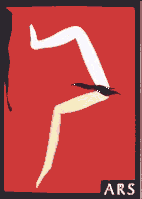 The beginnings of the school fall at the late 1950s, when after years of the all-pervasive Social Realism in art, artistic life in Poland suddenly became much more exciting. Although success usually has many fathers, in that case we can point out with precision the only one – the painter, drawer and graphic artist Henryk Tomaszewski. Admittedly he quickly gained support of young then and extremely talented artists who for years dedicated themselves to poster art. The most important artists of the Polish school of poster were Jozef Mroszczak, Wojciech Zamecznik, Jan Mlodozeniec, Waldemar Swierzy, Jan Lenica, Franciszek Starowieyski.
The beginnings of the school fall at the late 1950s, when after years of the all-pervasive Social Realism in art, artistic life in Poland suddenly became much more exciting. Although success usually has many fathers, in that case we can point out with precision the only one – the painter, drawer and graphic artist Henryk Tomaszewski. Admittedly he quickly gained support of young then and extremely talented artists who for years dedicated themselves to poster art. The most important artists of the Polish school of poster were Jozef Mroszczak, Wojciech Zamecznik, Jan Mlodozeniec, Waldemar Swierzy, Jan Lenica, Franciszek Starowieyski.
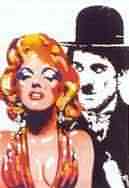 A good deal of thought has been given to the school’s phenomenon. It seems that its success should be attributed to social and artistic conditions. Social, because of the genial political climate in the country at the time. On the one hand, every possible institution, cultural ones in particular, were vying with one another for posters painted by the famous artist. For many years there was no film, opera or theatre premiere, concert, festival or any other public event without a poster. „There were years when I was making a poster every week, and even so I often had to decline the commission,” Waldemar Swierzy remembers. The Poster Museum has collected a few thousand Polish posters painted only between 1956 and 1963.
A good deal of thought has been given to the school’s phenomenon. It seems that its success should be attributed to social and artistic conditions. Social, because of the genial political climate in the country at the time. On the one hand, every possible institution, cultural ones in particular, were vying with one another for posters painted by the famous artist. For many years there was no film, opera or theatre premiere, concert, festival or any other public event without a poster. „There were years when I was making a poster every week, and even so I often had to decline the commission,” Waldemar Swierzy remembers. The Poster Museum has collected a few thousand Polish posters painted only between 1956 and 1963.
The poster soon became an element of mass culture. The collectors’ movement spread widely. There were galleries specialised in selling posters, while the popular Zycie Warszawy daily for many years held a very famous contest for the best posters of the month and the year, in which readers were the jury. Cheap posters forced entrance into Polish flats: people used to hang them on the walls, doors and even in the bathroom. Poster biennials in Warsaw attracted real crowds of visitors.
There is no surprise that the socialistic authorities used posters as a mean of propaganda, commissioning artists to celebrate such occasions as the Labour Day, party congresses, anniversaries and ceremonies. The leading Polish poster designers resisted temptation, others succumbed, which from time to time produced notable artistic effects (e.g. Starowieyski’s famous poster representing Lenin).
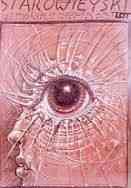 But that success had its strong artistic foundations. It was not mere graphic artists but firs and foremost excellent artists who established the Polish school of poster. For sure it was not a standardised school, as its most outstanding representatives adopted different forms of expression: Henryk Tomaszewski was conspicuous by a very discerning use of the mediums of expression, by an intellectual abstracts and by refined symbols. The erudite Franciszek Starowieyski liked to shock the spectator. He did not avoid surrealistic motives, willingly referring to the idioms of the painting of the old time. Waldemar Swierzy, the master of the spot of colour and bold colour schemes, was close to the Pop Art poetics. Jan Mlodozeniec consciously adhered to Primitivism, efficiently using simple, almost childish line and spot.
But that success had its strong artistic foundations. It was not mere graphic artists but firs and foremost excellent artists who established the Polish school of poster. For sure it was not a standardised school, as its most outstanding representatives adopted different forms of expression: Henryk Tomaszewski was conspicuous by a very discerning use of the mediums of expression, by an intellectual abstracts and by refined symbols. The erudite Franciszek Starowieyski liked to shock the spectator. He did not avoid surrealistic motives, willingly referring to the idioms of the painting of the old time. Waldemar Swierzy, the master of the spot of colour and bold colour schemes, was close to the Pop Art poetics. Jan Mlodozeniec consciously adhered to Primitivism, efficiently using simple, almost childish line and spot.
All these artists had similar characteristics. There was much to divide them as everyone of them had arrived at his own idiom, immediately recognisable, even from a distance. But at the same time there was something very important to link them together, something that made the Polish school something real and distinct.
The reason why that was the case was that all of them were painting ambitious posters, expecting of the public that they would associate and understand the signs, symbols and allegories. Polish posters made small pieces of art, but also rebuses, intellectual labyrinths and hide-and-seek games. Posters referred not only to emotions, but to intellect as well. Onlookers were required to think.
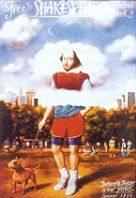 In the 1970s a new generation of young artists encroached upon the area of the poster art. The newcomers came from the student movement concentrating on the so- called conceptual poster. They were led by the rapacious contestant Rafal Olbinski and the so-called Wroclaw group of Jan Sawka, Jerzy Czerniawski, Jan Jaromir Aleksiun and Eugeniusz Get-Stankiewicz. Their main characteristics were keenness, reflective interpretation of reality, sensitivity to social occurrences, specific nonconformity and dissension.
In the 1970s a new generation of young artists encroached upon the area of the poster art. The newcomers came from the student movement concentrating on the so- called conceptual poster. They were led by the rapacious contestant Rafal Olbinski and the so-called Wroclaw group of Jan Sawka, Jerzy Czerniawski, Jan Jaromir Aleksiun and Eugeniusz Get-Stankiewicz. Their main characteristics were keenness, reflective interpretation of reality, sensitivity to social occurrences, specific nonconformity and dissension.
In the early 1980s subsequent young artists began achieving success. The one to gain the greatest popularity was Stasys Eidrigevicius, a Lithuanian living in Poland. He introduced his own unique world recollecting dreams and fairy-tales into the poster art. Sad figures of half- people, half-puppets with huge, always surprised eyes, occupying small wooden houses, covered street fences and notice boards in Polish towns. Wiktor Sadowski was the other young man with a great talent for the poster art. His very pictorial posters resembling blurred water-colour were, like Stasy’s, filled with nostalgia and mystery.
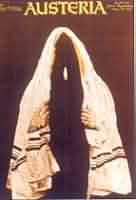 And lastly Andrzej Pagowski, a student of Waldemar Swierzy. To some he is the last representative of the Polish school of poster, to the others – the first poster artist of the new age. Pagowski concentrated on the poster in the late seventies. There were periods when he painted nearly a hundred posters a year. As opposed to his predecessors, he never had his own, distinct, easily recognisable style. Instead, he drew freely from the wide experience of the Polish school. In his posters, he followed all forms; fads and techniques were mixed in his works as well as trends and technics. He could pass from extreme asceticism to superabundance of Baroque. He juggled with nostalgia, the grotesque, satire and cruelty.
And lastly Andrzej Pagowski, a student of Waldemar Swierzy. To some he is the last representative of the Polish school of poster, to the others – the first poster artist of the new age. Pagowski concentrated on the poster in the late seventies. There were periods when he painted nearly a hundred posters a year. As opposed to his predecessors, he never had his own, distinct, easily recognisable style. Instead, he drew freely from the wide experience of the Polish school. In his posters, he followed all forms; fads and techniques were mixed in his works as well as trends and technics. He could pass from extreme asceticism to superabundance of Baroque. He juggled with nostalgia, the grotesque, satire and cruelty.
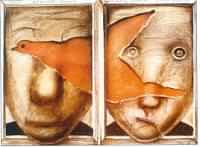 Inasmuch as it is quite easy to point to the beginnings of the Polish school of poster, it is rather difficult to place its decline. If we assume refined aesthetics, the synthetic denotation and the ambition to give a symbolic representation of difficult themes on paper, then the „slow death” of the Polish poster began with the successful appearance in the world of art of Olbinski, Aleksiun and Sawka. If we assume however, that the distinctive features of the Polish school were the individualism and subjectivism of its representatives, their very particular approach to the subject, their excellent skill and, last but not least, the pictorial value of their work, then the school continued for many more years with such representatives as Sadowski, Stasys Eidrigevicius and Pagowski.
Inasmuch as it is quite easy to point to the beginnings of the Polish school of poster, it is rather difficult to place its decline. If we assume refined aesthetics, the synthetic denotation and the ambition to give a symbolic representation of difficult themes on paper, then the „slow death” of the Polish poster began with the successful appearance in the world of art of Olbinski, Aleksiun and Sawka. If we assume however, that the distinctive features of the Polish school were the individualism and subjectivism of its representatives, their very particular approach to the subject, their excellent skill and, last but not least, the pictorial value of their work, then the school continued for many more years with such representatives as Sadowski, Stasys Eidrigevicius and Pagowski.
The same circumstances that once contributed to the establishment of the Polish school of poster contributed to its later decline. In the early nineties the market for posters dwindled rapidly. Lack of money made theatres, operas and film distributors abandon posters. In the streets the small-size artistic poster was superseded by impersonal imported placards and hoarding. A suitably arranged photograph began to triumph.
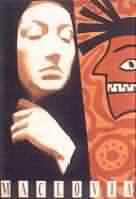
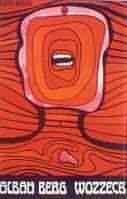 As a result, the circle of graphic artists have scattered. Many outstanding artists have emigrated (Olbinski, Sawka, Fangor, Szaybo, Lenica), others lost interest in posters, concentrating instead on painting or applied graphics (Get-Stankiewicz, Eidrigevicius, Pagowski, Starowieyski, Aleksiun).
As a result, the circle of graphic artists have scattered. Many outstanding artists have emigrated (Olbinski, Sawka, Fangor, Szaybo, Lenica), others lost interest in posters, concentrating instead on painting or applied graphics (Get-Stankiewicz, Eidrigevicius, Pagowski, Starowieyski, Aleksiun).
But changes in the world’s applied graphics have also contributed to the decline of the Polish school of poster. The present-day street advertising does not need artists but artisans able efficiently to carry out the customer’s orders. No one expects an artistic vision; the message may not be allegorical and ambiguous, but effective, that is plain.
And thus the refined picturesqueness has been commonly replaced by the „dresseddown design” where, knowingly, fashion is the chosen source of inspiration while bad taste is the vehicle, decomposition is the form of expression and primitiveness is the mean of expression. Does this mean that the Polish school of poster will never recapture its former glory?
Translated by Bronislaw Lemaitre
Programy lojalnościowe (zwane także programami VIP) znajdziemy wyłącznie w najlepszych legalnych kasynach w 2023 roku. Tego typu akcje marketingowe mają na celu przyciągnięcie graczy, którzy dysponują większą gotówką i regularnie obstawiają na grach typu owoce, ruletce czy w kasynie live. Innymi słowy są to premie i bonusy przygotowane dla high rollerów. W jaki sposób kasyna nagradzają ich za aktywność? Zwykle program VIP w kasynie zakłada istnienie kilku lub kilkunastu poziomów, które może osiągnąć gracz w zależności od swojej aktywności. W skrócie, im więcej gramy, tym szybciej awansujemy. Kasyno przelicza każdy złożony zakład w grze na punkty. Nasze saldo punktowe rośnie i gdy osiągnie odpowiedni poziom, czeka nas awans i nagroda. Do najpopularniejszych nagród w polskich kasynach należą oczywiście darmowe obroty. Free spiny możemy później wykorzystać na grach online Legacy of Dead albo innych tytułach. Czasem operator oferuje graczom gotówkę albo – w najlepszych kasynach – gadżety i inne nagrody rzeczowe.